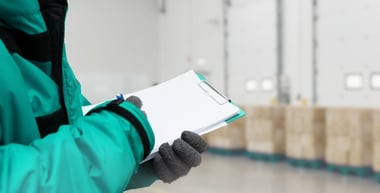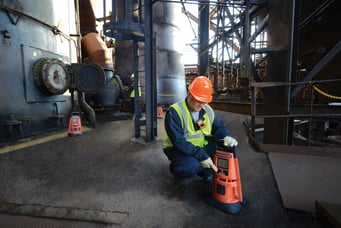Almost every industry has to deal with gas hazards of one kind or another, and the food and beverage industry is no exception. However, throughout the industry, there is a general lack of awareness when it comes to carbon dioxide (CO2) and the issues it can pose for not just workers, but also customers.
Thanks to its many uses, carbon dioxide is the most common gas in the food and beverage industry. It’s used to add carbonation to soft drinks, keep food items cold during transportation in the form of dry ice, and is released by leavening agents like yeast.
Carbon dioxide might seem harmless at first glance. After all, we exhale it with every breath, and plants need it for survival. The presence of carbon dioxide itself is not necessarily a problem, but its volume in a given environment can rise to dangerous levels.
The Dangers of CO2
The fact that carbon dioxide is colorless and odorless makes it potentially very dangerous. Since carbon dioxide is heavier than air, it displaces oxygen and at high concentrations will cause asphyxiation. In the event of a release, it’s easy to succumb to exposure, especially in a confined space like a tank or a cellar. Early symptoms of being exposed to high levels of carbon dioxide include dizziness, headaches, confusion, and loss of consciousness.
Accidents and fatalities do occur in the food and beverage industry from carbon dioxide releases. Without proper detection methods in place, everyone at a facility could be at risk. This is fairly common when one person shows symptoms of high carbon dioxide exposure and nearby workers attempt to help, only to become victims as well.
The Benefits of Gas Monitors
Any application that uses carbon dioxide puts workers at risk. Since carbon dioxide can’t be detected by the senses, the only way to identify high levels before it’s too late is to use gas monitors.
Personal gas detectors can continuously monitor the air in workers’ breathing zones to give them better awareness and the information they need to make smart decisions in the face of danger. Not only can gas monitors detect carbon dioxide in the air, but they can also alert others if an employee is in danger.
When monitoring for carbon dioxide, it’s important to use a multi-gas monitor with a dedicated carbon dioxide sensor. It’s a popular myth that monitoring for low oxygen levels or for combustible gases will give an approximate carbon dioxide reading. The reality is that carbon dioxide escalates to dangerous levels before an oxygen sensor would alarm, while high concentrations of carbon dioxide could read as a combustible gas, leaving you looking for a source that doesn’t exist.
There's no perfect gas monitor that can detect every possible gas hazard, but a multi-gas monitor like the Ventis® Pro5 is ideal for most food and beverage operations. You can configure the detector to monitor carbon dioxide and any other gasses employees are likely to encounter on the job, including LEL (Pentane), carbon monoxide, hydrogen sulfide, ammonia, and oxygen.
With built-in connectivity, the Ventis® Pro5 is the ideal gas monitor to protect individual employees and enable team-based safety by sharing gas readings and alarms between devices, alerting others if someone is in danger.
It’s easy to overlook the dangers of carbon dioxide in food and beverage applications, but remember this: if there’s potential for high carbon dioxide levels at your site, then you need a gas detector with a dedicated carbon dioxide sensor – there’s no other reliable way to protect the safety of your workers and customers.



